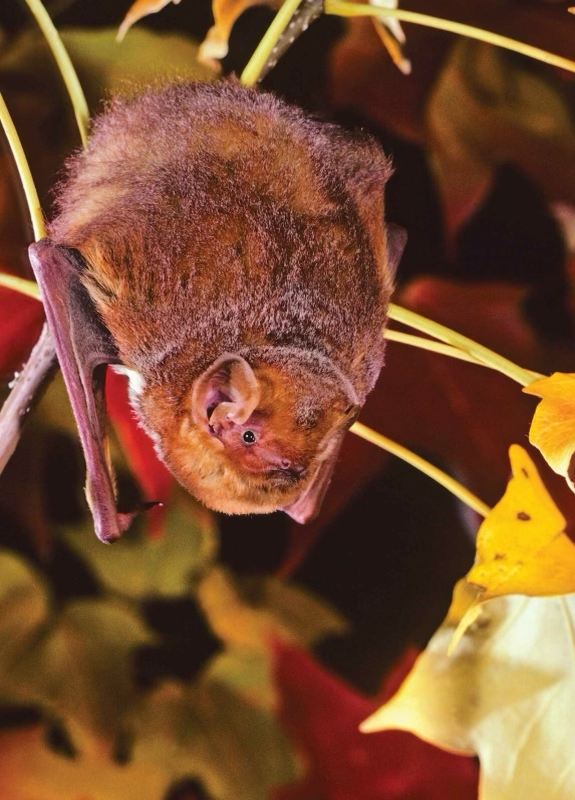Adopt the Eastern Red Bat
Protection Status
Federal: Not Listed
New York: Not Listed
Connecticut: Not Listed
Massachusetts: Not Listed
Pennsylvania: Not Listed
New Jersey: Not Listed
Vermont: Not Listed
The Eastern Red Bat (Lasiurus borealis) with its striking reddish-orange fur, inhabits a large range across the eastern and central United States, southern Canada, and northeastern Mexico. This species is another of our region’s tree bats, migrating to warmer temperatures during the winter.
Despite the high availability of tree roosts, these bats tend to be solitary or found with a single female and her young, meaning that roost site abundance does not necessarily equate to a large population size. Although much habitat remains, historical deforestation and ongoing habitat changes have impacted these bats.
Eastern red bats are adaptable, using a variety of environments, including managed forests and urban areas with large trees. While habitat loss from deforestation has been a challenge, these bats can thrive in urbanized landscapes that provide sufficient tree cover, utilizing large hardwood trees for roosting.
Deforestation and land development continue to reduce available habitats, particularly in riparian (riverside) woodlands crucial for insect abundance. Conservation of these areas is vital for sustaining the bat population.
The use of pesticides to control forest pests may reduce food resources for eastern red bats. The overall impact of pesticide use on their population remains uncertain.
Eastern red bats have a relatively low reproductive rate, making it difficult for them to recover from population declines caused by threats like wind turbines and habitat loss.
Protecting eastern red bats involves implementing mitigation strategies at wind energy facilities, conserving key habitats, and reducing pesticide use. These efforts are essential to ensure the survival and recovery of this remarkable species.





